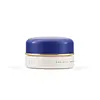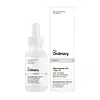What's inside
What's inside
 Key Ingredients
Key Ingredients

 Benefits
Benefits

 Concerns
Concerns

 Ingredients Side-by-side
Ingredients Side-by-side

Water
Skin ConditioningGlycerin
HumectantSqualane
EmollientPropanediol
SolventXylitol
HumectantGlyceryl Stearate Se
EmulsifyingCyclopentasiloxane
EmollientBehenyl Alcohol
EmollientMyristyl Myristate
EmollientSilica
AbrasiveBeeswax
Emulsion StabilisingPaeonia Albiflora Root Extract
Skin ConditioningCamellia Japonica Seed Oil
EmollientCamellia Sinensis Leaf Extract
AntimicrobialLonicera Japonica Leaf Extract
Skin ConditioningCoix Lacryma-Jobi Ma-Yuen Seed Extract
Skin ConditioningChondrus Crispus Extract
Skin ConditioningInositol
HumectantSodium Hyaluronate
HumectantTocopheryl Acetate
AntioxidantCaprylyl/Capryl Glucoside
CleansingCaprylic/Capric/Myristic/Stearic Triglyceride
EmollientTetrasodium Pyrophosphate
BufferingDisodium EDTA
Sodium Acrylate/Acryloyldimethyltaurate/Dimethylacrylamide Crosspolymer
Emulsion StabilisingSodium Dilauramidoglutamide Lysine
HumectantIsostearic Acid
CleansingSorbitan Isostearate
EmulsifyingEthylhexylglycerin
Skin ConditioningAluminum Hydroxide
EmollientParfum
MaskingStearyl Alcohol
EmollientAlcohol
AntimicrobialPhenoxyethanol
PreservativeCI 77891
Cosmetic ColorantCI 77491
Cosmetic ColorantWater, Glycerin, Squalane, Propanediol, Xylitol, Glyceryl Stearate Se, Cyclopentasiloxane, Behenyl Alcohol, Myristyl Myristate, Silica, Beeswax, Paeonia Albiflora Root Extract, Camellia Japonica Seed Oil, Camellia Sinensis Leaf Extract, Lonicera Japonica Leaf Extract, Coix Lacryma-Jobi Ma-Yuen Seed Extract, Chondrus Crispus Extract, Inositol, Sodium Hyaluronate, Tocopheryl Acetate, Caprylyl/Capryl Glucoside, Caprylic/Capric/Myristic/Stearic Triglyceride, Tetrasodium Pyrophosphate, Disodium EDTA, Sodium Acrylate/Acryloyldimethyltaurate/Dimethylacrylamide Crosspolymer, Sodium Dilauramidoglutamide Lysine, Isostearic Acid, Sorbitan Isostearate, Ethylhexylglycerin, Aluminum Hydroxide, Parfum, Stearyl Alcohol, Alcohol, Phenoxyethanol, CI 77891, CI 77491
 Reviews
Reviews

Ingredients Explained
These ingredients are found in both products.
Ingredients higher up in an ingredient list are typically present in a larger amount.
Phenoxyethanol is a preservative that has germicide, antimicrobial, and aromatic properties. Studies show that phenoxyethanol can prevent microbial growth. By itself, it has a scent that is similar to that of a rose.
It's often used in formulations along with Caprylyl Glycol to preserve the shelf life of products.
Water. It's the most common cosmetic ingredient of all. You'll usually see it at the top of ingredient lists, meaning that it makes up the largest part of the product.
So why is it so popular? Water most often acts as a solvent - this means that it helps dissolve other ingredients into the formulation.
You'll also recognize water as that liquid we all need to stay alive. If you see this, drink a glass of water. Stay hydrated!
Learn more about Water